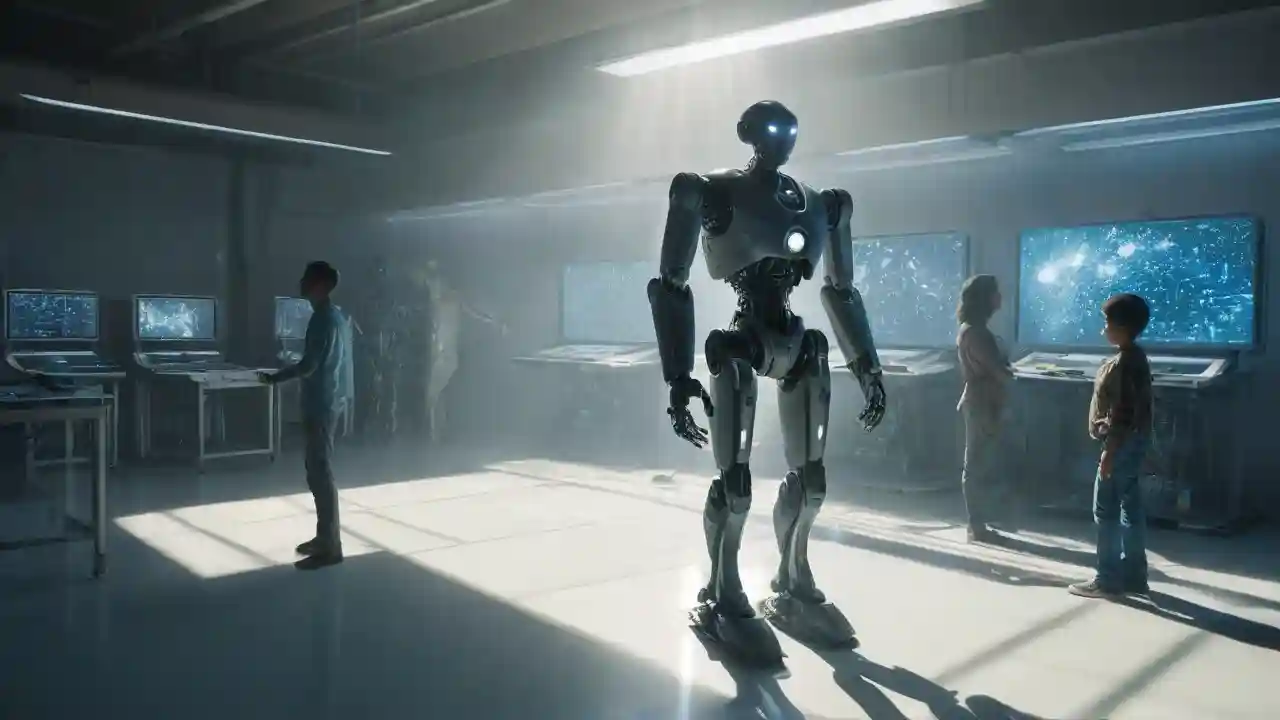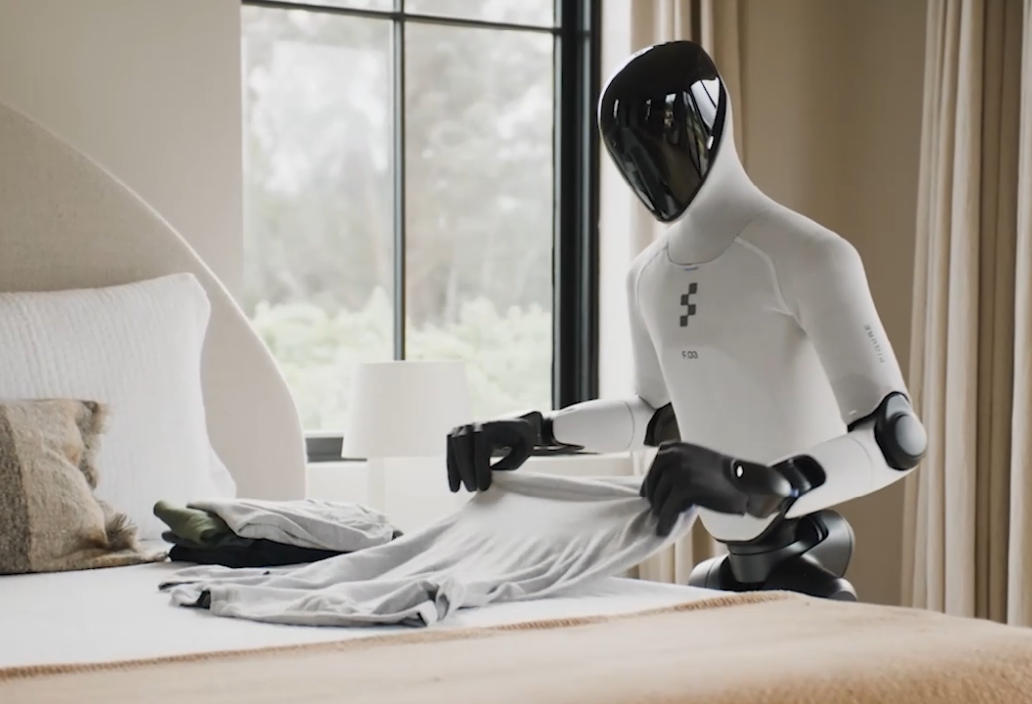
The $38 Billion Gamble: Figure Bets Humanoid Robots Can Finally Leave the Lab
The $38 Billion Gamble: Figure Bets Humanoid Robots Can Finally Leave the Lab
Figure puts manufacturing first as the race to launch general-purpose robots enters a decisive stage
On a crisp October afternoon in 2025, Figure took the wraps off what could be the boldest bet yet in humanoid robotics—a machine built not just to dazzle researchers in a lab but to roll straight onto the factory floor that makes it.
The company’s latest creation, the Figure 03, doesn’t arrive with a flashy viral demo or lofty promises alone. Instead, it comes tethered to a far more grounded idea: a factory called BotQ. Unlike rivals still hand-assembling units by the dozen, Figure claims BotQ can already churn out 12,000 robots a year, with plans to scale up to 100,000 within four years. That’s a radical shift for an industry where the gap between concept videos and commercial reality has always been uncomfortably wide.
This move comes at a tense moment. Analysts believe humanoid robotics could grow into a $38 billion market by 2035. Some forecasts peg the number lower, closer to $30 billion, while the more optimistic stretch it above $50 billion. Competition is heating fast. Tesla is gunning for price tags under $30,000 with its Optimus project, Agility Robotics already has machines working warehouses, and Apptronik just inked major auto deals. Whoever locks in early credibility will have the upper hand.

Smarter Senses, Smarter Strategy
Figure 03’s design makes it clear the company is tired of prototypes gathering dust. Its new vision system doubles frame rates, cuts latency by 75 percent, and widens the field of view by 60 percent. Cameras embedded in its palms give it backup eyes when the main sensors lose track in cramped spaces.
Perhaps more impressive are the tactile sensors built from scratch after off-the-shelf options failed in testing. Each fingertip can feel a force as tiny as three grams—the weight of a paperclip. That sensitivity lets the robot recognize the difference between holding something securely and about to drop it. With softer, more adaptive fingertips that spread grip across surfaces, it can pick up anything from jagged sheet metal to flimsy plastic bags.
These upgrades aren’t minor tweaks. They’re designed to push robots past scripted motions and into real-world dexterity. In chaotic settings—imagine bins jumbled in a warehouse or tools scattered on a bench—the ability to see quickly and feel precisely is the difference between finishing the job or calling in a human.
Turning the Factory Into the Product
For all the tech wizardry, Figure’s boldest move may not be in the robot itself but in how it plans to build it. The shift away from CNC-machined prototypes toward die casting, injection molding, and stamping forced the company to redesign nearly every component with cost-cutting and fast assembly in mind. Parts were eliminated wherever possible.
That kind of upfront tooling isn’t cheap, but it flips the cost equation. Instead of expenses ballooning with each small run, production gets cheaper as volumes rise. Inside BotQ, a custom-built manufacturing system tracks every subassembly, giving engineers near-instant feedback on quality.
Compare that to rivals still making a few dozen units by hand, and you see why Figure’s bet stands out. Still, questions linger. Can the company hold tight tolerances on complex pieces like actuators while cranking out thousands at a time? The answer will decide whether this model scales profitably—or buckles under its own ambition.
The production line also enables futuristic features. Wireless charging pads built into the robot’s feet push two kilowatts of power, while ultra-fast mmWave links transfer data at ten gigabits per second. The goal: near-continuous operation, with robots docking themselves during short breaks to recharge and upload terabytes of performance data.
Helix: The Brain Behind the Hands
Hardware only matters if the software can keep up. Enter Helix, Figure’s homegrown AI system that blends vision, language, and motor control. The ambition is simple but massive: a robot that doesn’t just repeat pre-programmed actions but learns quickly from experience and from data shared across the fleet.
The payoff could be enormous. Each additional hour a robot works generates new lessons. Those lessons feed back into Helix, which updates the behavior across the entire fleet, creating a snowball effect similar to Tesla’s progress with self-driving cars.
Of course, the risk is just as big. Vision-language-action models are notorious for failing when the world throws them curveballs. Homes, in particular, are minefields—unpredictable lighting, pets darting around, kids dropping toys in random places. Factories are more controlled, which explains why BMW is still piloting Figure’s earlier model on its production lines while domestic readiness remains aspirational.
Between the Lines
Figure markets the 03 as designed for “the home and the world at scale,” but industry insiders whisper that it’s not yet ready for domestic duty. That’s a common reality across humanoid projects: houses demand higher levels of autonomy, tighter safety certifications, and lower support costs than factory floors.
And there’s something missing in the announcement—hard numbers. No stats on average uptime, failure rates, or how often humans need to step in. Without those, promises of “dramatic cost savings” remain unproven.
Meanwhile, competitors aren’t standing still. Agility’s Digit has been hauling bins in warehouses with Amazon. Tesla brings unmatched supply chain muscle. Apptronik raised $350 million and partnered with Mercedes. Sanctuary AI is betting on human-in-the-loop training for high-dexterity skills. In other words, the race is crowded.
Safety, Liability, and Everything in Between
Safety isn’t just a buzzword here—it’s the gatekeeper to scaling. Figure 03 packs soft textiles, layered foams at pinch points, and a certified battery system to ease concerns about operating near people. The machine is lighter than its predecessor, but it’s still a powerful moving object sharing space with fragile humans.
Wireless charging, while sleek, introduces new headaches: heat management, interference, and precise placement requirements. The mmWave data link is lightning fast but finicky indoors. These aren’t dealbreakers, but they’re challenges that must be engineered away before home deployment can be trusted.
And then there’s privacy. Robots with cameras and microphones that beam back terabytes of data each day will inevitably raise alarms. Who controls that data? How long is it stored? Can it be redacted at the source? Regulators will almost certainly wait until something goes wrong before stepping in.
Investors’ Balancing Act
For backers, Figure 03 looks like a Tier-1 play wrapped in startup uncertainty. The integration of advanced sensors, real-time tactile control, robust manufacturing plans, and big-picture AI strategy puts it ahead of most science-fair prototypes. But that doesn’t erase the risks.
Analysts warn investors to look past shiny demos and demand metrics that matter: uptime above 90 percent, failures no more frequent than once per 1,000 hours, and the ability to add new tasks in weeks, not months. Margins will hinge on scaling efficiency and proving data safeguards.
The bigger backdrop is a global labor crunch. Populations are aging, workers are scarce, and demand for automation keeps climbing. That tailwind will keep enterprise buyers interested. Still, household adoption sits farther down the road, waiting for breakthroughs in autonomy, liability protections, and customer support models.
The humanoid robotics industry has finally hit a crossroads. Flashy prototypes aren’t enough anymore—manufacturing discipline and financial durability are about to take center stage. For Figure, the next 18 months will reveal whether the 03 becomes a breakthrough story or another reminder of how long the road to human-like robots still is.
NOT INVESTMENT ADVICE